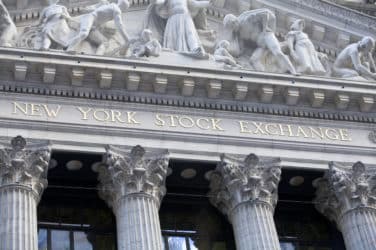
 
Year-end brings the holidays and the turning of the calendar. For market participants who trade in Europe, 2017 will bring the realization that Markets in Financial Instruments Directive II comes into force in less than one year.
The sweeping ruleset updates the original MiFID from 2007, taking into account the evolution of trading and markets since then, as well as lessons learned from the global financial crisis of 2008-2009. Algorithmic and high-frequency trading, direct electronic access, market data and OTC markets are some of the specific areas addressed by MiFID II, but essentially all trading and investment firms that buy and sell in European markets fall within its purview.
MiFID II’s countless technical standards and deep detail will be debated until the go-live date of January 2, 2018, and beyond. But in a broad sense, what will the new regulatory regime mean for Europe as a trading destination?
The question is not an insignificant one, as European market centers compete with those in North America and Asia for liquidity and capital. Trading opportunities exist around the world; after a region’s fundamental outlook is deemed attractive, the next criteria for participation is how efficiently trades can be executed, and the rules on the ground are a critical element of this.
Market participants aren’t keen on having MiFID II prep as a fixture on their 2017 to-do list, but there is cautious optimism that the end result will be worthwhile.

Christian Voigt, Fidessa
“The initial intention was to make markets safer and better for the end investor. This is something we can all subscribe to,” said Christian Voigt, senior regulatory adviser for Fidessa in London. “I haven’t spoken to anyone in the industry who wouldn’t agree with that aim.”
“There are a number of things that can bring more competition, improved transparency and a better understanding of the markets,” Voigt told Markets Media. “For example, market data for OTC trading in equities is all over the place, and it’s hard to make any sense of it. Hopefully MiFID II will address this. MiFID II can also bring standardization and further harmonize the rules in Europe…which in principle should make it easier for firms to do business across Europe.”
MiFID II “really nails down the rules for best execution,” said Patrick Lastennet, director of marketing and business development for financial services at Interxion. “In a context where everything is quite volatile at the moment, being able to hang onto some solid set of rules in order to trade is being welcomed. I think in general, the benefit of the stability outweighs some individual items in MiFID II which might offer a bit more constraints for customers.”
One of those individual items is clock synchronization, which regulators are pushing as a way to gain a consolidated view of trading at a given point in time. Trading venues and market participants will need to synchronize their clocks to Coordinated Universal Time (UTC), though some may be at microseconds and others at milliseconds depending on their business profile.
“What individual customers are more concerned about is having the right level of granularity to synchronize all their internal applications,” Lastennet said. “There’s an ongoing debate — do I need to synchronize to UTC and I can only use GPS, or do I need something a bit more sophisticated in order to guarantee the traceability to UTC?

Article sponsored by Interxion
“At the end of the day, we’re seeing the technology rationale outweighs the ‘ticking the box’ of compliance,” he continued. “In other words, people are not going to adopt over-the-top solutions to be completely traceable to UTC. They will adopt a pragmatic solution that allows them to do their level of forensics that their compliance department tells them to do, regardless of what exactly is in the MiFID text. Regulators will still have a challenging time getting a complete view of the market, in terms of diagnoses of incidents.”
One clear-cut drag from MiFID II is the cash that will go toward compliance rather than invested in the business. But in a best-case scenario, European market operators and participants recoup those costs and them some via business expansion.
“There will undoubtedly be increased costs from MiFID II,” said Fidessa’s Voigt. “There is also the risk that dismantling the intermediation of markets may cause a ‘Balkanization’ of liquidity. What is uncertain right now is whether or not the benefits will outweigh the costs and the risks.”


